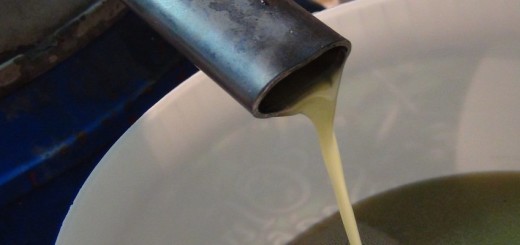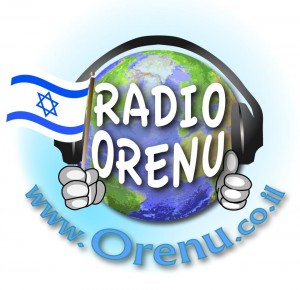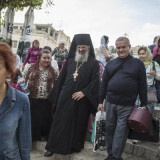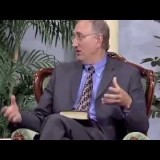A Mengele twin, Hagana fighters, and a ‘mute’, among survivors honored
6 survivors kindle memorial flames at Wednesday night’s official Holocaust Remembrance Day ceremony
 When the annual Holocaust Martyrs’ and Heroes’ Remembrance Day begins Wednesday evening, the official start of the 24-hour-long period is marked with a ceremony at Yad Vashem, Israel’s official museum commemorating the Holocaust.
When the annual Holocaust Martyrs’ and Heroes’ Remembrance Day begins Wednesday evening, the official start of the 24-hour-long period is marked with a ceremony at Yad Vashem, Israel’s official museum commemorating the Holocaust.
For those watching the 8 p.m. event on television, or in person at the outdoor event, one of the most poignant and uplifting parts of the ceremony is the lighting of the torches in memory of the six million who perished during the Holocaust.
The torches are traditionally lit by six survivors who suffered through the travails of the Holocaust but managed to emerge alive and make their way to Israel, then just a fledgling state.
“The torchlighters really symbolize the six million victims and the survivors,” said Estee Yaari, a spokesperson for Yad Vashem. “It’s their personal stories that we are able to connect with, that create an emotional connection for many people.”
It wasn’t until the mid-1990s that the stories of the torchlighters — now displayed in a short video during the ceremony — were included in the commemoration. The videos are also available online at the Yad Vashem website.
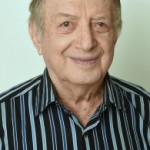
Avraham Harshalom survived Auschwitz and fought in the Czech underground (photo credit: Israel Harari/Yad Vashem)
Avraham Harshalom, originally Fridberg, was born in 1925 in the town of Pruzhany, Poland, now Belarus. His family was placed in the town’s ghetto in 1941, and his parents and grandmother were deported to Auschwitz in 1942. Avraham and his brother, Sioma, also ended up at the camp, where Sioma became ill and was sent to the gas chambers.
Avraham, however, found ways to survive. In June 1944, he and two other inmates escaped Auschwitz for several days, but were eventually caught and brought back.
Months later, in October 1944, Avraham and a friend managed to blend in with 10,000 inmates being evacuated. He posed as a Pole and ran away, eventually reaching Prague, where a family hid him for the duration of the war. In 1945, the shop owner who hid Avraham recruited him into the Underground, where he fought against the Germans. He was awarded honorary Czech citizenship and decorated as a hero.
Two years later, Avraham was recruited by the Haganah to enlist in a flight course with the Czech Air Force. By 1949, he arrived in Israel, and served in the Israel Air Force during the War of Independence.
He married Rachel and has three children and six grandchildren.
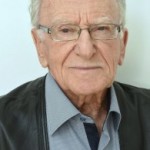
Dov Shimoni set up alternative hospitals for Jews in Budapest during the war (photo credit: Israel Harari/Yad Vashem)
Dov Shimoni, originally known as Erwin Schwarz, was born in Budapest, Hungary, in 1919. After being injured in a labor camp, Dov worked as a clerk at the Jewish hospital.
Already in his 20s at that time, Dov was clever and capable, finding ways to save his family, friends and neighbors. He, his parents and his sister survived the war by being imprisoned in one of the buildings in Budapest set aside for thousands of Jews. Dov managed to transfer his family to a house whose Jewish tenants had been taken away and was labeled “Jew-free,” signage that ultimately saved his family.
When the SS expropriated the Jewish hospital and ordered the patients removed, Dov and his friends converted the local Jewish school to a hospital, managing to keep some of the equipment and eventually setting up 18 additional buildings to serve as hospitals.
They recruited workers and orderlies, and were able to keep the hospital running for the duration of the war. When the war ended, Dov restored the Jewish hospital and helped manage the Joint Distribution Committee’s health organizations in Hungary.
He moved with his family to Israel in 1949, where he worked at Tel Hashomer Hospital and eventually in a managerial capacity at hospitals and health care organizations. Dov and his wife, Elisheva, who is now deceased, had two daughters. He is now married to Ilona, and they have nine grandchildren and four great-grandchildren.
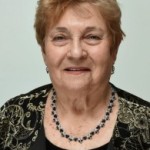
Sara Weinstein hid in the forests as a child with her father and some siblings (photo credit: Israel Hadari)
Sara Weinstein, formerly Chait, was born in Poland, one of six children. Her two older brothers were conscripted into the Red Army, and after her mother and their Polish friends who tried to hide them were killed by the local villagers, Sara, her father, brother and two sisters found refuge in the forest.
They stole food at night, learned to play games without noise and Sara remembers wearing the same dress for the entire two years they lived in the forest. In fact, she said, she never felt cold for many years afterward.
When Sara’s father was killed by the villagers in 1944, Sara and her sisters were transferred to an orphanage, and later to a children’s home in Italy.
She immigrated to Israel in 1947, and joined the IDF at the age of 16. Sara married Avraham, and they have three daughters, six grandchildren and three great-granddaughters.
![Ephraim Reichenberg survived with his twin brother Menashe until the end of the war [photo by Israel Hadari]](http://orenu.co.il/en/wp-content/uploads/2015/04/Ephraim-150x150.jpg)
Ephraim Reichenberg survived with his twin brother Menashe until the end of the war [photo by Israel Hadari]
Ephraim (Moshe) Reichenberg was born in Hungary, and with his twin, Menashe, was the oldest of seven brothers and sisters.
When the entire family was deported to Auschwitz, the twins were taken to Mengele’s laboratories for experiments on their vocal cords. During the death march from Auschwitz in 1945, the two were among 22 of 160 inmates who remained alive.
The brothers eventually reached Prague, where Menashe was hospitalized, while Ephraim returned to Budapest to search for surviving family members.
He found no one, and upon returning to Prague, learned that Menashe had also died. Ephraim, who had been known as Moshe until then, changed his name to Ephraim in memory of his brother, after the biblical sons Joseph, Ephraim and Menashe.
Ephraim left Hungary for Israel in 1948, and served in the Hagana and Palmach. He and his wife, Yaffa, have two sons, five grandchildren and three great-grandchildren.
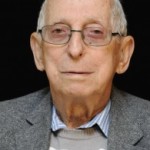
Eggi Lewysohn was sent to a farm in Denmark at the start of the war before being sent to Terezin
Eggi Lewysohn, formally known as Ernst-Gunther, was born in Breslau, Germany.
His older sister was sent to live with relatives in Britain in 1937 and Eggi joined a Youth Aliya group in 1938, following Kristallnacht, which planned to send Eggi to work on a farm in Denmark. When he said goodbye to his parents, it was clear to them that they would never see each other again.
Eggi flourished on the farm and had a good relationship with the farmer, who was not sympathetic to the Germans. The entire Youth Aliya group, which met once a week, was caught during a 1943 manhunt and sent to the Terezin ghetto.
While many Jews in the ghetto were deported to Auschwitz, Eggi and the other prisoners from Denmark remained, and were liberated in 1945 from Terezin.
When Eggi eventually returned to the Danish farm where he had worked, he was told that his father had died of illness and his mother had been deported to an extermination camp. After visiting his sister in England, Eggi made aliyah in 1951 and settled in Kibbutz Neot Mordecai. He married Ayala, who has since died, and they had four children, 11 grandchildren and 14 great-grandchildren.
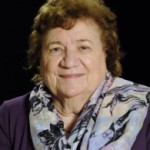
Shela Altaraz went with her older sister to Pristina, but ended up in a camp, on her own, mute from fear (Photo credit: Yossi ben David/Yad Vashem)
Shela Altaraz was born in Stip, Macedonia, the youngest of four. In 1941, Macedonia was occupied and annexed to Bulgaria, and in 1943, Shela and her family, along with hundreds of other Jews, were taken to a cigarette factory in Skopje for three weeks.
At that point, Altaraz’s sister, Bella, was allowed to leave because she had Italian citizenship. Their mother pushed Shela into Bella’s arms, telling her to “take the little one.” The rest of the family was forcibly deported and killed at Treblinka.
The two sisters went to Pristina, where Bella ended her life when her husband was imprisoned. Left alone, Shela did housework for a friend, and then found sanctuary in a Muslim village. She was eventually caught and sent to a camp where she was the only child and was nicknamed “the mute” because she didn’t speak.
When the camp was liberated, Shela was eventually moved to an orphanage in Belgrade, where she remained for four years. She was sent to Israel in 1949 with a Youth Aliya group, and met her husband, Avraham, at Kibbutz Ein Dor. They have three children, ten grandchildren and three great-grandchildren.

